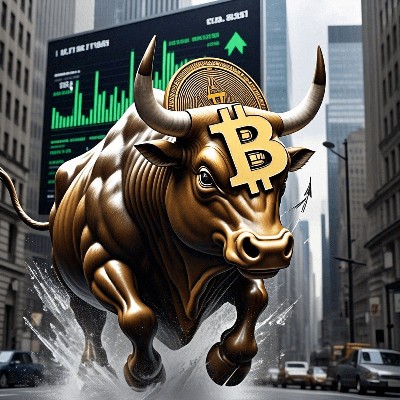Holding Through FUD: Conviction in $INIT
Holding Through FUD: Conviction in $INIT
In the volatile world of crypto, moments of fear, uncertainty, and doubt — commonly known as FUD — are inevitable. Price swings, rumors, negative news cycles, and even coordinated attacks can shake even the strongest holders. However, true conviction isn't tested when everything is smooth. It’s tested in the storm, and right now, conviction in $INIT matters more than ever.
$INIT represents more than just a token; it stands for a vision, a community, and a roadmap built on innovation and resilience. Those who have studied the fundamentals know this: $INIT is not driven by hype alone. It is backed by real development, an engaged community, and a team committed to long-term growth.
When FUD surfaces, it often distorts the reality of a project. Temporary price drops and emotional reactions create opportunities for those who remain calm. History shows that projects with strong foundations not only survive periods of doubt but emerge even stronger. Early Bitcoin and Ethereum holders know this truth all too well.
Holding through FUD requires discipline. It means tuning out the noise and focusing on facts. It means revisiting the reasons you believed in $INIT in the first place: its utility, its partnerships, its expanding ecosystem. It means understanding that market sentiment is temporary, but strong fundamentals build lasting value.
For $INIT holders, this is a defining moment. Those who can hold through the uncertainty, stay grounded in research, and trust the process will be the ones rewarded when the storm passes.
Conviction is not just about belief — it’s about action. It's about refusing to sell your future for fear today.
In times like these, real holders are made.
This is not just about holding a token.
This is about holding the line for what you believe in.
This is about conviction in $INIT.
---
Would you also like a second, slightly more aggressive version depending on the style you’re going for?

$EPT :Market Sentiment and Trading when it comes to the $EPT token.
1. Price Analysis
Market Trends: Tracking the price movements of $EPT over time is crucial. A well-performing token often shows steady growth, but it can also experience sharp price corrections due to market conditions, news, or investor sentiment. Market charts (often available on platforms like CoinMarketCap, CoinGecko, or trading platforms) provide a detailed overview of its price history.
Volatility: Cryptocurrencies, including $EPT, can be highly volatile. This volatility can create opportunities for traders but also presents risks. For example, a small piece of news can cause a significant uptick or downturn in the token's price.
Technical Indicators: Traders often use technical analysis to predict future price movements. Common indicators include the Relative Strength Index (RSI), Moving Average Convergence Divergence (MACD), Bollinger Bands, and others to assess whether the token is overbought or oversold, which can help with entry and exit points.
2. Trading Volume and Liquidity
Liquidity: Liquidity refers to how easily $EPT can be bought or sold without causing large price changes. High liquidity means that there are enough buyers and sellers in the market to handle significant trades without causing big price swings. Liquidity is important for large-scale investors or traders who don’t want their orders to drastically affect the price.
Volume: Trading volume indicates the level of activity in the market. Higher volume often suggests stronger interest in $EPT, and can be a sign of a bullish (positive) or bearish (negative) sentiment. A sudden spike in trading volume may indicate that a major event or announcement is happening, which could impact the token's price.
3. Exchanges
Availability on Exchanges: The number and reputation of exchanges where $EPT is listed can significantly impact its exposure and trading volume. Tokens listed on major exchanges (such as Binance, Coinbase, Kraken, or decentralized exchanges like Uniswap or SushiSwap) tend to have better liquidity and higher visibility.
Cross-Exchange Arbitrage: Traders might also look for price differences for $EPT across different exchanges to profit from arbitrage opportunities. However, this usually requires fast execution due to the efficiency of arbitrage bots.
4. Market Sentiment and News
Positive Sentiment: If $EPT is associated with a successful product launch, a strategic partnership, or adoption by a major platform, this could drive a positive market sentiment, leading to price appreciation. Media attention, endorsements by influencers, or integrations into major platforms could all fuel positive sentiment.
Negative Sentiment: On the other hand, negative news such as regulatory concerns, security issues (like smart contract vulnerabilities), or failure to deliver on promises can lead to a sharp decline in the token's value. Even broader market downturns, such as a Bitcoin crash, can lead to a drop in $EPT's price as well.
5. Investor Sentiment and Speculation
FOMO (Fear of Missing Out): This is a common driver in the crypto market. If $EPT's price starts rising quickly, traders and investors may rush to buy in, fearing they’ll miss out on potential profits. This can lead to rapid price increases.
Fear, Uncertainty, and Doubt (FUD): On the flip side, rumors, security breaches, or regulatory announcements can lead to fear, uncertainty, and doubt. This can cause a significant sell-off, pushing the price down.
Whales: Large investors or “whales” who hold a significant portion of the total $EPT supply can have a strong influence on price action. Their buying or selling behavior can impact market sentiment, especially if they make large trades.
6. Investor Psychology
Long-term vs. Short-term: Some investors may see $EPT as a long-term hold, based on its fundamental value and the future growth of the project behind the token. Others may focus on short-term trading, capitalizing on market volatility for quick profits. This dichotomy in investor behavior can influence price trends.
Community Engagement: Active communities around tokens often influence sentiment and trading activity. A strong, engaged community can create a positive feedback loop, where increased interest and enthusiasm boost the token's value, encouraging more investment and further engagement.
7. External Factors
Macroeconomic Conditions: Broader financial markets can also play a role in the price of $EPT. For example, if the stock market experiences a downturn or if interest rates rise, it could negatively impact the price of all cryptocurrencies, including $EPT.
Regulation: As more countries look to regulate cryptocurrencies, the sentiment around certain tokens can shift dramatically. Positive regulation (such as recognizing $EPT in certain jurisdictions) could fuel growth, whereas negative regulatory moves (such as a ban or restrictions on trading) could harm the price.
8. Speculative Trends
Hype and Social Media: Social media platforms like Twitter, Reddit (especially r/Cryptocurrency), and Telegram can play a big role in influencing market sentiment. Speculation driven by influencers, viral tweets, or coordinated trading activities can spike a token’s value quickly. This is often seen in meme coins or tokens with large followings, but it can happen with other tokens like $EPT.
Pump-and-Dump Schemes: Sometimes, certain groups attempt to artificially inflate the price of $EPT (or any token) through coordinated buying and selling. Once the price rises, they sell their holdings at a profit, causing a sudden crash in price. This can lead to significant losses for those caught in the cycle.
Understanding market sentiment and trading dynamics is essential for anyone investing or trading in cryptocurrencies like $EPT. Being aware of price movements, liquidity, market news, and trading behavior helps navigate the often-volatile market environment.



 أقل سعر
أقل سعر أعلى سعر
أعلى سعر 





































